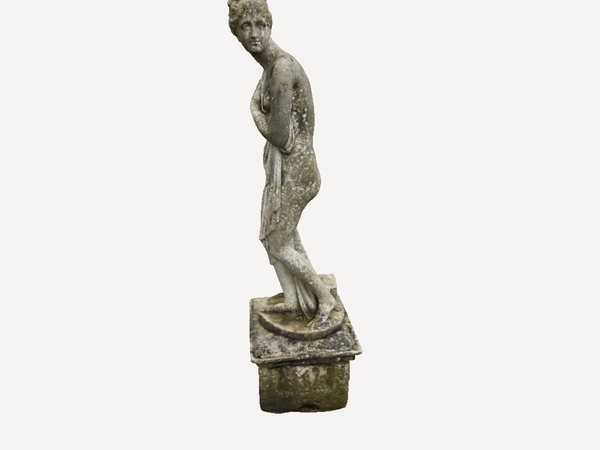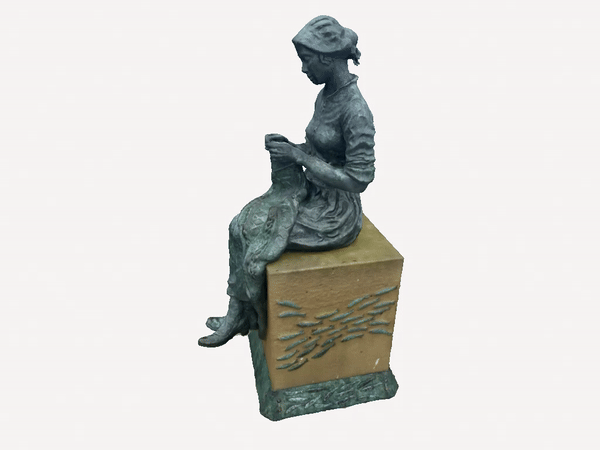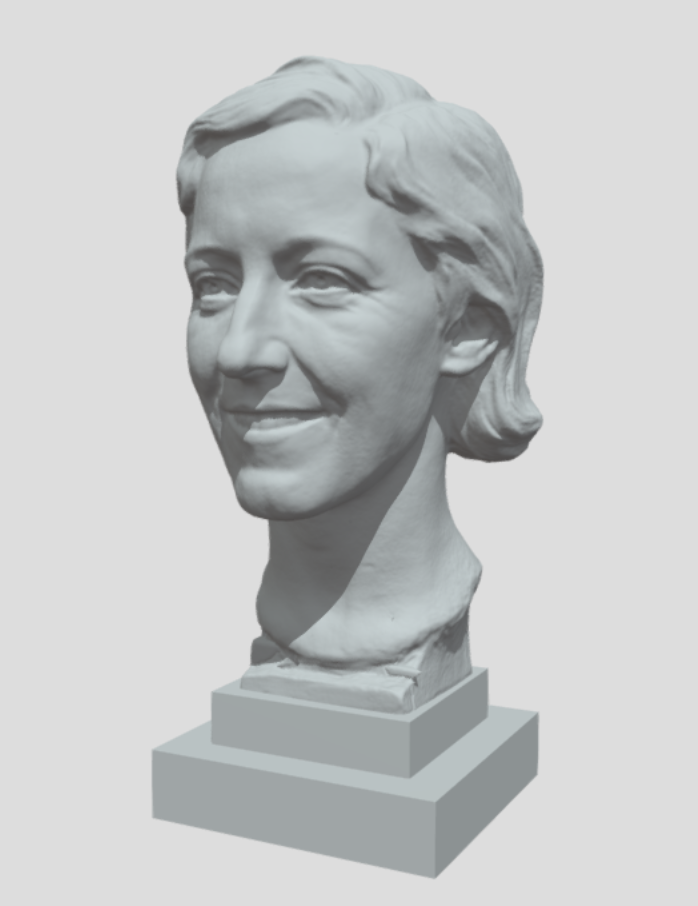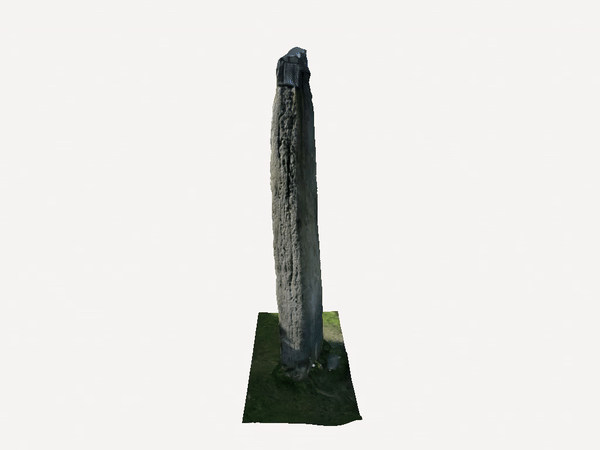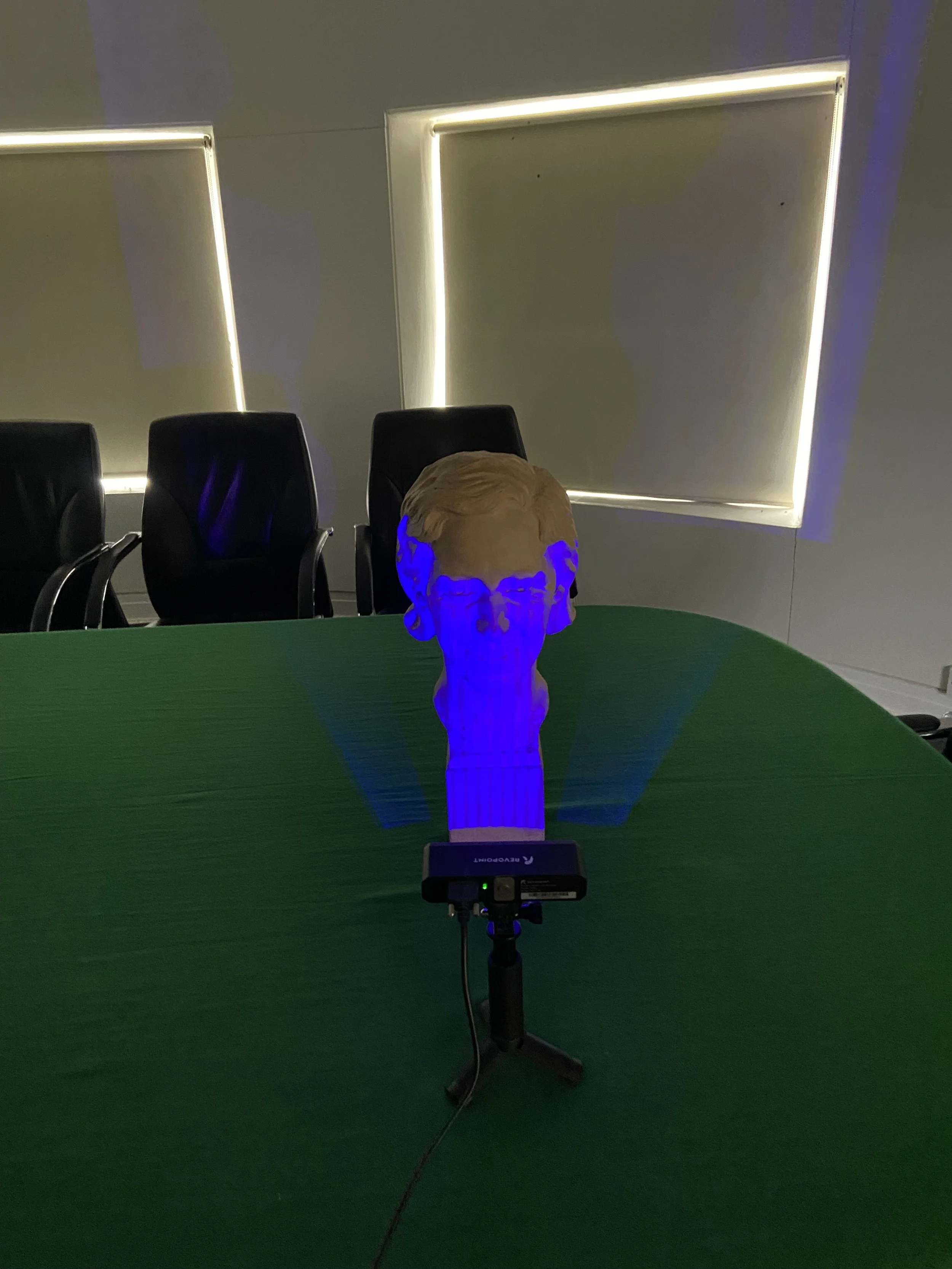3D Scanning? What’s that all about?
The Tech.
3D scanners come in a few shapes and sizes. The most familiar are probably those used in healthcare, a CT (CAT) scanner takes a series of X-rays which can be stacked and used to produce a 3D image. Similarly, MIR scanners uses magnets and radio-waves to produce a 3D model.
In the world of 3D modeling and printing such high precision 0.5 micrometer machines are the reserve of well funded unis and a couple of companies. Many more models are created with laser or structured-light scanners. With laser scanners, the device outputs a laser light source and a sensor sees how it is reflected back. Lidar is in fact a macro version of laser scanning, instead of the sensor sitting on a tripod in a dark room. It’s mounted on a plane or satellite.
Here at Chapel Prints we have a couple of structured light scanners, these work via very similar principles to a laser scanner. Our machines have a resolution down to about 1000-100 microns.
As with all things there’s a trade-off between detail and scale, many of our scanning sessions on a single small object can run into the gigabytes and can still take a great deal of editing to produce a printable model.
Another well used method is photogrammetry; here a series of 2D photographs are taken, usually 50-1000 and a computer-program compares and overlays the photos to create a 3D model. This method has come on leaps and bounds in the last 5 years; most smartphone scanning apps employ a version of this tech.
Ultimately, some manual editing is required in most scanning methods, digital sculpting, 2D to 3D extrusion, and CAD drawing, often all together, have there place in producing a printable model.
The Potential.
3D scanning will be coming home to roost in a big way, very soon. 200 years ago photography was in its infancy and I’m sure many saw it as a fad, a curio for eccentric gentlemen with wondrous moustaches. Being able to record and replicate physical items in 3D, turn them into digital assets has enormous potential - whether for research or everyday life.
Although we have had the technology to create digital scans for 40 plus years, only now is the average computer powerful to display such models. Now my smart phone can produce very usable 3D scans, and this ability for people to produce, share, and consume 3D digital media has amazing potential. Potential, Chapel Prints whats to promote and be at the forefront of.
For education it allows you to scrutinize historical artifacts that might be gathering dust in museum storage on the other-side of the world. Researchers can easily dip into ever grown datasets from the likes of Morphsource. Engineers can quickly identify required repairs and use 3D scanning for quality control or quicker prototyping. Artists can assemble 3D assets and make a virtue mood board using more objects than could fit in the largest museum in the world. Before long automated driving and flying drones will be using 3D maps to help navigate their way along roads or over buildings.
In the everyday 3D scanning can empower the individual immensely. A broken item could be translated into a digital file, fixed on the computer, and a replacement printed out. Love a fossil you’ve found and want to give copies of it to your friends scan it in and print it out. The same way photographs have painted pictures in the blank spaces of our experience, 3D models of the real-world can do the same in much great detail. As with many technologies the limitations are our resourcefulness and imagination.
What does Chapel Prints uses 3D scanning for?
We’re using our structured-light scanners to digitize wildlife skull specimens we find. These then expand the items we sale.
The set of Anglo-Saxon grave good we scanned-in included extremely fragile iron pieces which we were able to create replicas as well as version of how they looked new.
Several commissions have centered around scanning in delicate display pieces such as a Napoleon’s death mask and Amy Johnston bust to create tactile exhibits to increase accessibility for the blind and partially sighted.
From scanning in an object we’re able to make an digital inverse mould which can be printed. For example; we scanned in a wall decoration at a historical house and from this printed a press mould. This can be used with air dry clay to create a learning activity for younger visitors.
We’ve scanned in damaged display pieces, repaired them digitally and printed a good as new replica.

